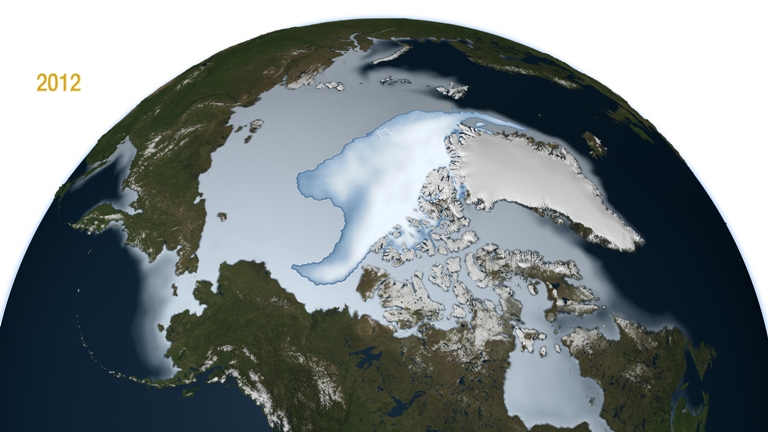NOAA ice data support new discoveries in the Arctic- Changes in sea ice drive ozone loss, mercury fallout
NOAA Apr. 12, 2012 How much ice cover is there in the Arctic and Antarctica? How about the Great Lakes and the Chesapeake Bay? Not only does it change from season to season, but also long-term changes and trends have been observed too. Changing ice cover can fluctuate in response to other environmental variables. It also drives other changes in the environment – in salinity (salt concentration), ecosystem habitats, and weather and climate patterns. The shipping and transportation industries, energy producers, water suppliers are among those who rely on accurate ice cover data. Scientists exploring changes in the Arctic environment rely on it too. NOAA, the U.S. Navy , and the U.S. Coast Guard work together to provide accurate and up-to-date data on ice cover through the National Ice Center (NIC) in Suitland, Md. One example of the value of NIC data is a recent and unexpected discovery about chemicals in the Arctic atmosphere. Ice cover affects ozone … and mercury? An international NASA-led research team reported that changes in sea ice are driving chemical reactions that result in ozone depletion and the toxic element mercury falling out of the Arctic atmosphere onto the ocean and icy surface. Mercury could adversely affect the health of people and wildlife in the Arctic, and the ozone depletion finding gives scientists new insight on Arctic ozone changes in the troposphere, as sunlight returns to northern latitudes in late winter in relation to falling ozone levels in the stratosphere that have been recently reported. The research team includes Arctic sea ice and climate experts from 13 academic and government research institutions, including NOAA’s Pablo Clemente-Colón, Ph.D., NIC chief scientist. The NIC’s monitoring and long-term observations of Arctic sea ice provided required information on changes in the relative distribution of old and new ice contributes to the chemical reactions. A large amount of the thicker Arctic sea ice cover has been disappearing due to increased melting during summer months and year-round seawater flowing out of the region through the Fram Strait (a passage from the Arctic Ocean to the Greenland and Norwegian seas). This thicker ice is then replaced with new, thinner ice in the winter months, so that the ratio of old, perennial ice to new, seasonal ice has shifted. So, how does disappearing thicker Arctic sea ice cover change Arctic atmospheric chemistry? “The seasonal or first-year ice is saltier and thinner than the old ice and is also characterized by fractures and leads [linear cracks in the ice that form when ice floes diverge or shear as they move parallel to each other] that provide the lower atmosphere with increased exposure to sea salts including bromine,” Clemente-Colón says. Scientists believe that as some of this bromine escapes into a cold atmosphere in the presence of sunlight, it sets off reactions that remove ozone and mercury from the air. “We also discovered that mountain ranges in Alaska and the western Northwest Territories in Canada limit the horizontal distribution of Arctic bromine in the atmosphere. This work could dramatically impact our understanding of ozone depletion in the polar regions,” says Clemente-Colón. “It establishes that some of the Arctic ozone depletion observed from satellites during early spring is actually happening in the troposphere, the lower part of the atmosphere, instead of the stratosphere.” This difference is significant: Ozone in the lower atmosphere can have harmful health effects, but in the upper atmosphere (stratosphere) it forms a layer that shields the earth from harmful ultraviolet radiation. The researchers’ findings will be published in the Journal of Geophysical Research-Atmospheres. The team has just completed a Spring 2012 study to better understand the impacts of reduced sea ice on atmospheric chemistry in the Arctic. |




